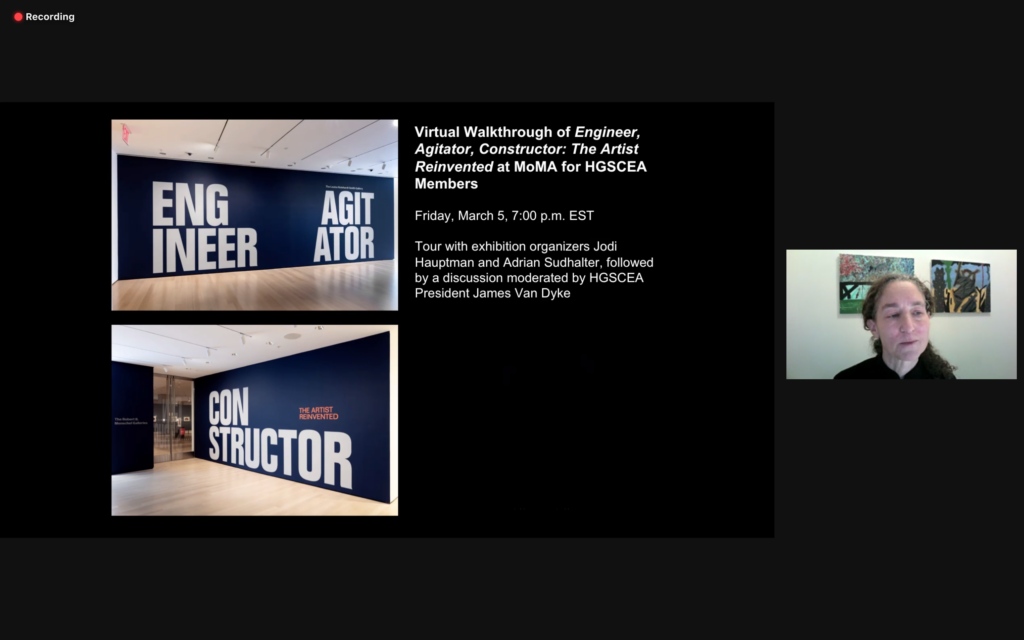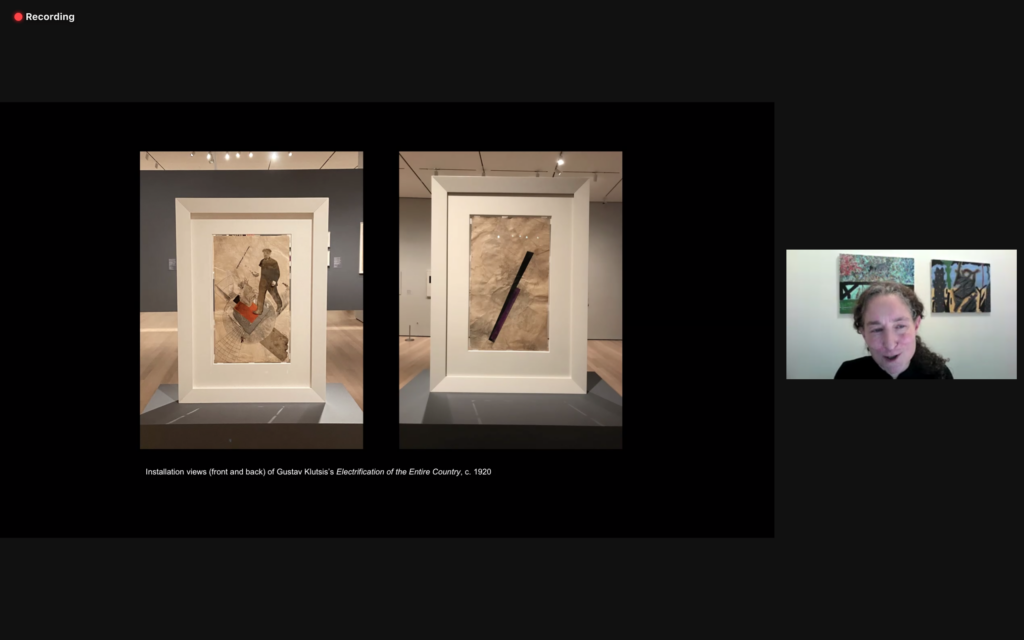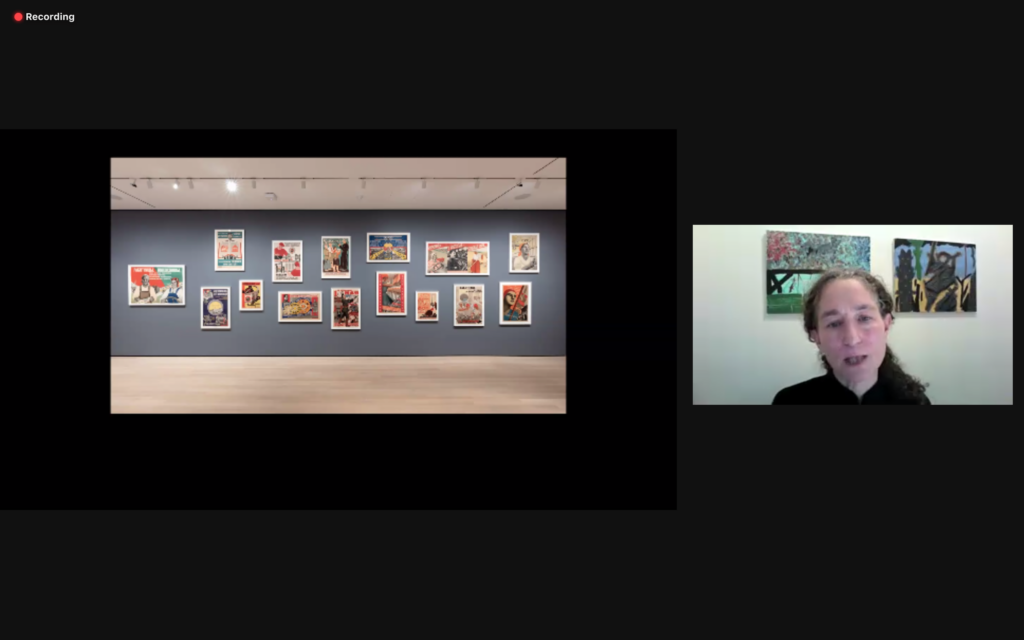HGSCEA | Historians of German, Scandinavian and Central European Art
HGSCEA UPDATE
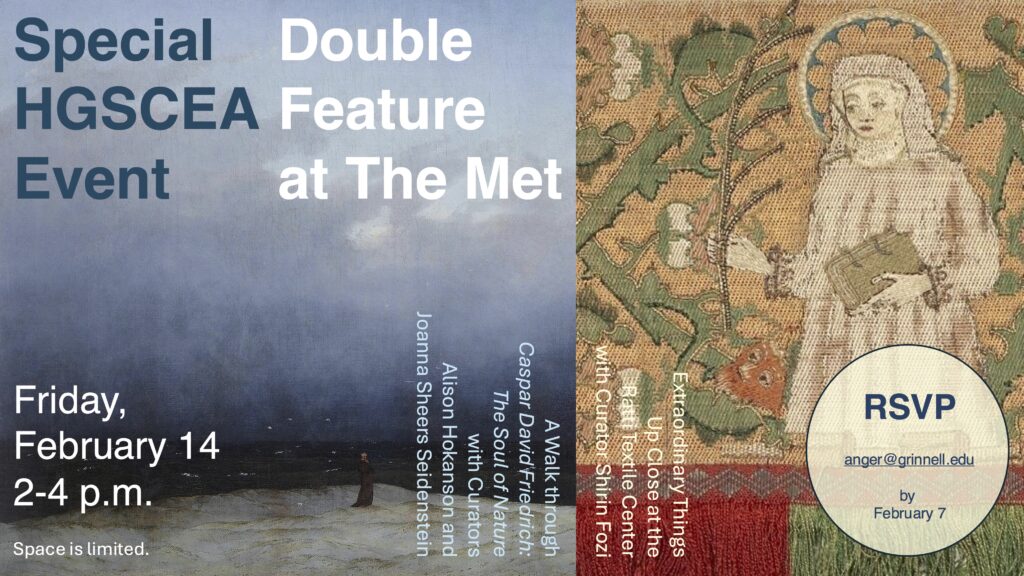
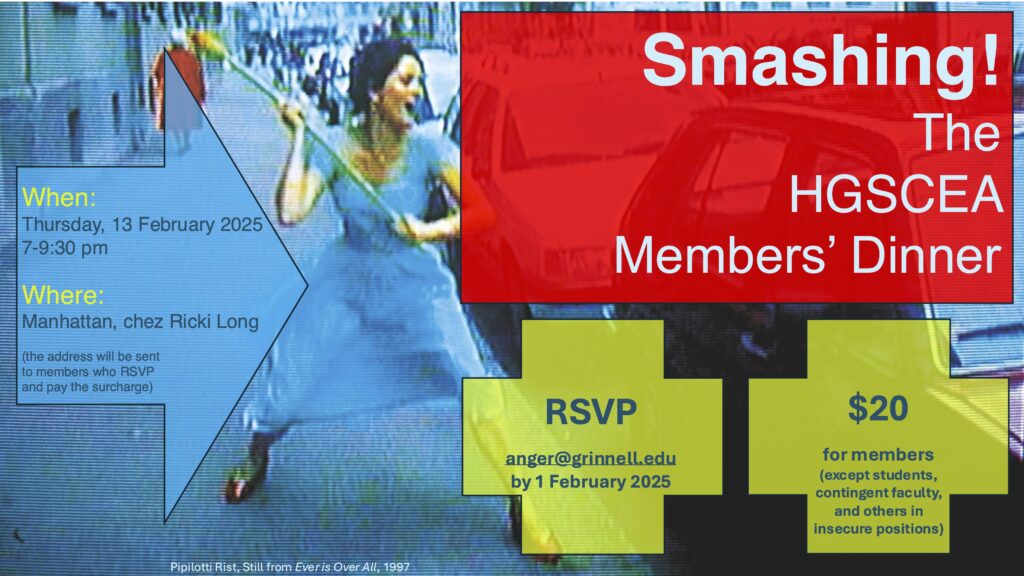
Dear Fellow HGSCEANs,
It has been a long time since I’ve written. It’s time for an update.
We had a great conference in Chicago last February. Our sponsored session, chaired by Marsha Morton and Pat Berman, was well-attended and offered listeners a set of four excellent and provocative papers on health, illness, and the art of medicine in the early twentieth century by Amanda Brian, Katerina Korola, Kathryn Carney, and Jonathan Odden. Jay Clarke, curator of prints and drawings at the Art Institute of Chicago, hosted a special event that gave members the opportunity to examine and to discuss some of the German, Scandinavian, and Central European works on paper there. Finally, we hosted another delightful members’ dinner at Bistronomic, where I announced the winners of the annual Emerging Scholars Publication Prize. After long and lively deliberations necessitated by the quality of the large pool of submissions, the Board decided to name co-winners. The first was Tamara Golan, an assistant professor at the University of Chicago, for her article, “Mit dem Kreidestift und Farben: Revolutionizing Grünewald in the German Democratic Republic,” which appeared in the Oxford Art Journal. The second was David W. Norman, a post-doctoral scholar at the University of Wisconson-Madison, for his article “A Monochrome at Ukkusissaq: Pia Arke’s Home-Rule Earthworks,” which was published by October. Finally, an honorable mention was awarded to Michelle Oing, for her article “Carnival’s unstable objects: masks as human-sculpture hybrids in Nuremberg’s Schembartlauf,” in Sculpture Journal. Even if very belatedly, I want once again publicly to congratulate all the winners of that competition, and thank everyone who submitted their work to the Board. It is always exciting to read the outstanding scholarship of our members. I am looking forward, as always, to this year’s competition!
CAA has traditionally been the main focal point of the organization’s activity, but there is no reason now for the annual conference to be the exclusive site of our activity. While we all have been happy, I think, to lessen the amount of time we need to spend on Zoom or Teams since the most dangerous months of the pandemic, we want to continue to utilize those platforms in order periodically to offer accessible events for all of our members, wherever they may live and work. This past May, for instance, Freyda Spira and Joseph Henry, curator and curator fellow at the Yale University Art Gallery, offered HGSCEA members a special online presentation of the exhibition “Munch and Kirchner: Anxiety and Expression,” which was on display there until late June. Freyda and Joseph spent well over an hour with the members who were logged in. They talked about the scholarly insights the exhibition had yielded with slides that focused on particular works in the exhibition. They gave a sense of the spatial and conceptual organization of the show with installation views. They engaged in a vigorous Q&A at the end. I want to thank them both very much for their willingness to share their work with HGSCEAns who were unable to visit the exhibition in person, and to Alison Morehead, a contributor to the exhibition’s catalogue and member of the HGSCEA Board, who initially proposed the idea for this very enjoyable event. Another exciting online curatorial talk, scheduled for late next month, is in the final stages of planning. Be on the lookout for the announcement this coming week!
So much for the year in review. Looking forward, I want to remind viewers of a few upcoming dates. The first is 15 November, which is the deadline for eligible members who are presenting papers in any session at the CAA annual conference to apply for travel stipends (https://hgscea.org/trave-stipend/). Second is the deadline for submissions to the Emerging Scholar Publication Prize. We haven’t yet determined that exact date, but it typically is in mid-December. I’ll send out more information later this fall.
I am looking forward to seeing many of you from afar at the upcoming online special event, and also at CAA’s annual conference in New York in February 2025! Our sponsored session, “The Visual Culture of Festivals in Germany, Scandinavia, and Central Europe,” is being chaired by Michelle Oing. You can see the call for papers on the CAA website (https://caa.confex.com/caa/2025/webprogrampreliminary/Session14130.html), and I encourage interested members to submit proposals by the deadline of 29 August! In addition to the session, we are at the initial stages of planning for the next members’ dinner as well as a few exciting special in-person events during the conference. Stay tuned!
That’s it for now. Please let us know about ideas for special remote and in-person events or ways that you think HGSCEA can better serve you. The Board would love to hear from you!
All best,
Jim van Dyke
HGSCEA President

A special walkthrough of MoMA’s Engineer, Agitator, Constructor: The Artist Reinvented with exhibition organizers, Jodi Hauptman and Adrian Sudhalter, followed by a discussion moderated by HGSCEA President James Van Dyke.
Friday March 5th via Zoom.
HGSCEA’s sponsored session
“Between Point Zero and the Iron Curtain: International Cooperation in Art, 1945-1948,”
Chaired by Eva Forgacs (Art Center College of Design)
Discussion lead by Barbara Jaffee (Northern Illinois University)
Papers by Anna Jozefacka (Hunter College), Lauren Elizabeth Hanson (Harvard Art Museums), Lynette Roth (Harvard Art Museums), and Petra Skarupsky (University of Warsaw)
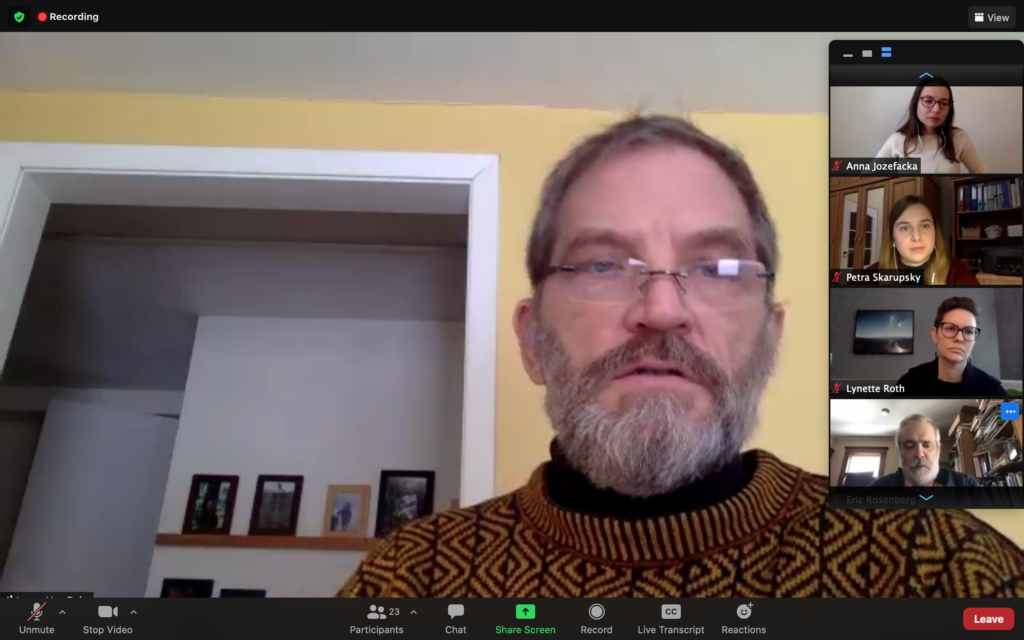
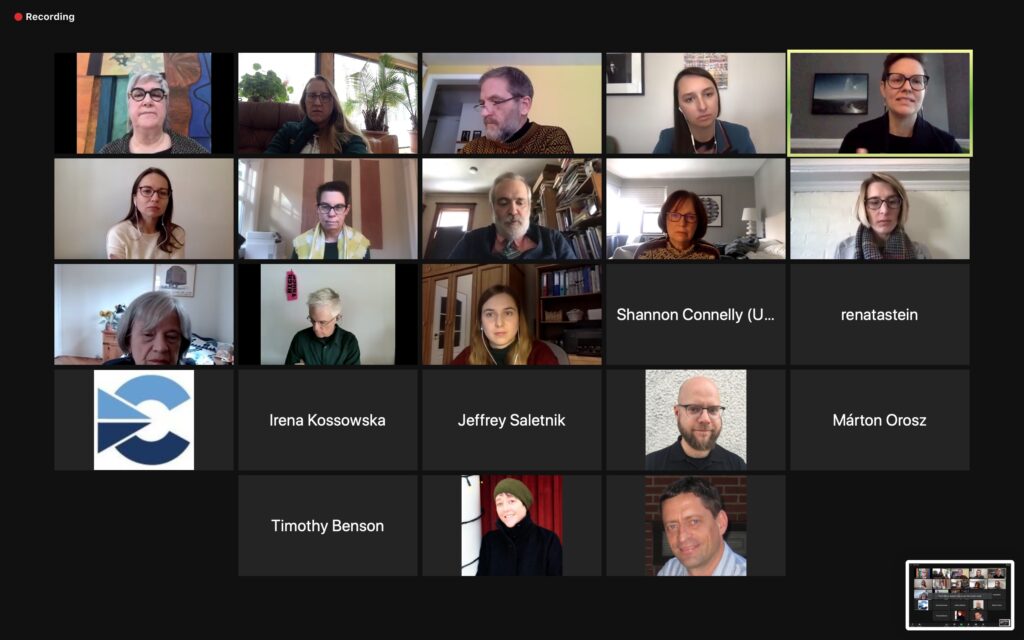

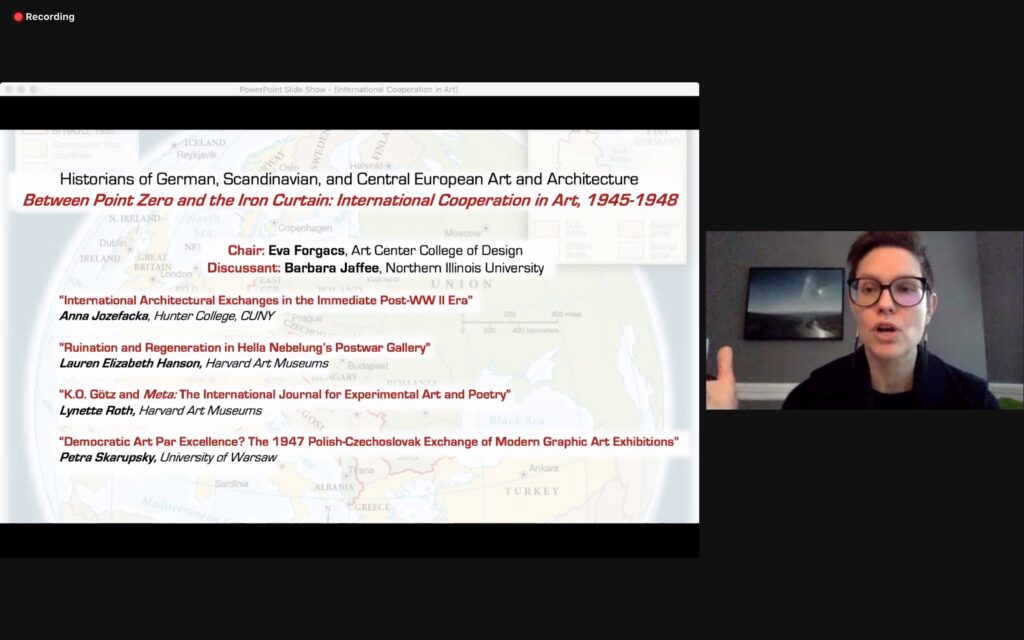
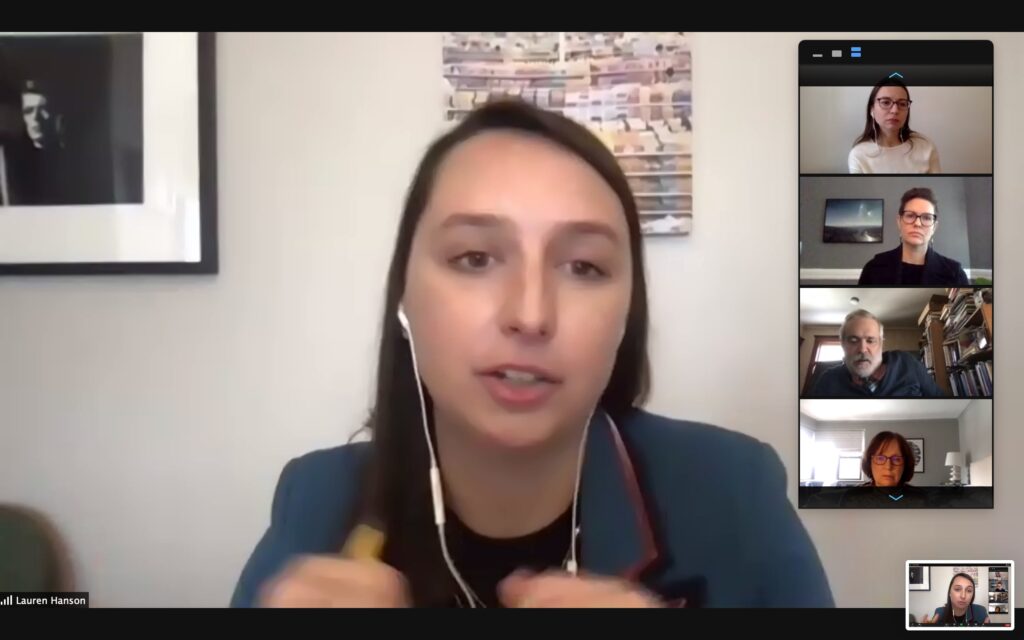

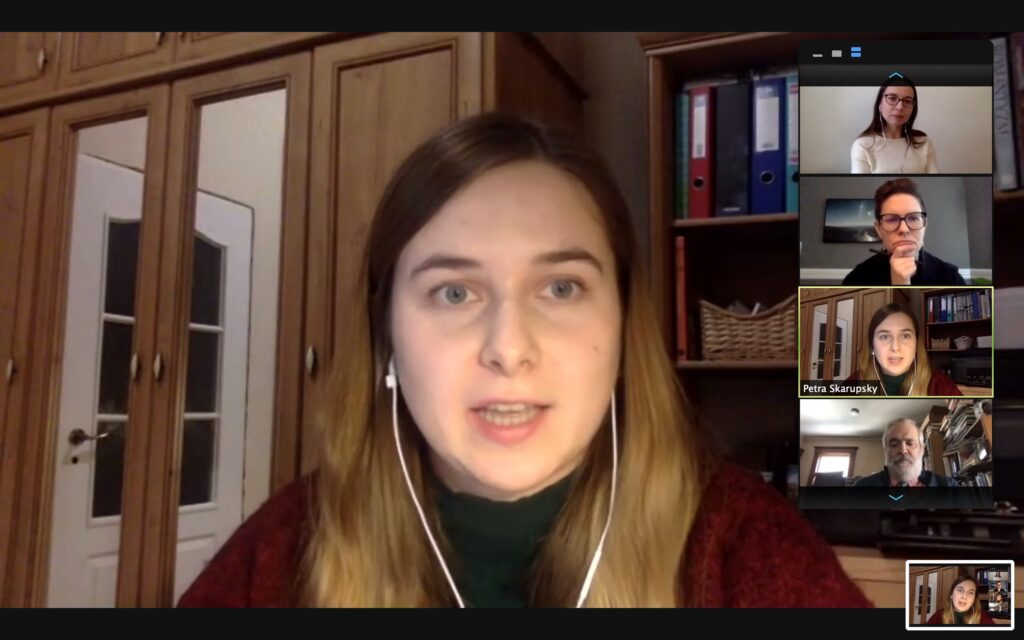

February 5, 2021
Dear fellow HGSCEANs,
I hope this finds you all as well as one can be in these days.
At a recent meeting on Zoom, the Board considered hosting some sort of virtual happy hour in lieu of our annual dinner and reception in conjunction with remote CAA, but decided that another large remote meeting was the last thing that people would want to attend, and that even if they did there would be no way to approach the buzz of numerous small conversations and the energizing conviviality that we all have when we’re in the same room together. Hence, instead of the usual presidential oration, I’m writing this note to let you know about a few things.
To begin, that recent meeting of the Board was primarily devoted to a discussion of the Emerging Scholars Publication Prize for 2020, the ninth iteration of the competition. As always, the pool of submissions was outstanding, ranging from early medieval to contemporary, from runestones and reliquaries to intarsia and photography, from Scandinavia to Austria and from Poland to Paris. The strength of the publications that were submitted bodes well for the future of the discipline in general, the study of German, Scandinavian, and Central European art, and our affiliated society in particular. At the same time, this wealth of scholarly quality and critical acuity posed yet again a challenge for the Board in its capacity as jury. But, after long deliberation and debate, the Board took a vote to determine the result. I am delighted to report that the winner of this year’s prize is Aleksander Musiał’s (Princeton) article “Mentem mortalia tangent – Fragments and Fetishes in Puławy Landscape Garden (1794-1831),” which appeared in the Oxford Art Journal. An honorable mention was awarded to Jordan Troeller (Universität Graz) for “Lucia Moholy’s Idle Hands,” in October. On behalf of the Board, I wish to congratulate both of these colleagues!
As always, a substantial number of HGSCEA’s members are presenting papers or have organized sessions at this year’s annual conference. HGSCEA’s sponsored session, which was proposed and organized by Eva Forgacs (Art Center College of Design) and is entitled “Between Point Zero and the Iron Curtain: International Cooperation in Art, 1945-1948,” brings together papers by Anna Jozefacka (Hunter College), Lauren Elizabeth Hanson, Lynette Roth (both Harvard Art Museums), and Petra Skarupsky (University of Warsaw), with a commentary by Barbara Jaffee (Northern Illinois University). Thanks go to the organizers and all of the participants for persevering in the face of uncertainty and concerns about the new process, and for realizing yet another great session. The pre-recorded papers are, or will be, accessible to those who have registered for the conference. The live Q&A with the authors and organizers will take place on the conference site on Friday, February 12, from 12-12:30 p.m. (US, EST).
In addition, the Board will hold its annual business meeting remotely on Zoom on Wednesday, February 10, from 7-8:30 p.m. (US, EST). If you would like to attend the first, public part of the meeting, please send me an email to let me know and I will send you the invitation to the meeting.
Finally, the Board thought it was important to offer HGSCEA’s membership a special event akin to those that have taken place at recent annual conferences. HGSCEA member Adrian Sudhalter and MoMA curator Jodi Hauptman have generously offered to host a remote curator’s tour through their exhibition “Engineer, Agitator, Constructor: The Artist Reinvented, 1918–1939,” currently on view at MoMA. The exhibition traverses much of HGSCEA’s geographic terrain and numerous HGSCEA members contributed to the catalogue. The succinct virtual tour through the galleries, will leave plenty of time for questions and discussion. The event is scheduled to take place on Friday, March 5, starting at 7 p.m. (US, EST). Mark your calendars! More details on how to participate will be announced soon.
That’s all there is to report for now. I already miss the annual dinner, and the pleasure of seeing so many friends! I look forward to 2022 in the hope that we can once again enjoy together a delicious meal, good wine, and great company.
Until then, stay well and be safe!
Wishing you all the best,
Jim van Dyke
Call for Session Proposals for CAA 2022
The HGSCEA Board is soliciting proposals from members for its sponsored ninety-minute session at the annual conference in February 2022, taking place in Chicago. The proposed session may be on any topic having to do with German, Scandinavian, or Central European art, architecture, design, or visual culture of any period; sessions focusing on theory, criticism, or historiography are also welcome. Proposals may be geographically and chronologically tightly focused or broadly defined. They may be for complete sessions, in which case the names of participants should be included, or for sessions soliciting contributors. To see the topics of recent HGSCEA sessions, go to: https://hgscea.org/hgcea-at-caa/ and https://hgscea.org/hgcea-at-caa-archive/
The proposal should consist of a brief letter indicating interest and expertise, a description of the topic (no longer than 300 words), and a condensed c.v. (no longer than three pages). These materials should be submitted electronically to Jenny Anger (anger@grinnell.edu) no later than February 7, 2021. Notification of the Board’s decision will be sent in March.
Historians of German, Scandinavian, and Central European Art and Architecture Emerging Scholars Essay Prize, 2020
Call for Submissions
Submissions are now being accepted for the 9th Annual HGSCEA Emerging Scholars Essay Prize, an award of $500 given annually to the author of a distinguished article or essay published the preceding year on any topic in the history of German, Scandinavian, or Central European art, architecture, design, or visual culture. Submissions, which must be in English and may be from electronic or print publications, must have a publication date of 2020; applicants must be either current Ph.D. students or have earned a Ph.D. in or after 2016 and must be members of HGSCEA at the time of application (https://hgscea.org/join-hgcea/). The recipient of the Prize (along with honorable mentions as appropriate) will be chosen by the members of the HGSCEA Board, notified in late January 2021, and publicly announced in February. Submissions should include a copy of the publication and a CV. They should be sent as electronic attachments to HGSCEA’s Secretary, Jenny Anger (anger@grinnell.edu), by December 28, 2020.
February 2020
Dear colleagues and friends,
It was great to see so many members of HGSCEA at CAA’s annual conference in Chicago! Our gatherings, so rich and convivial, are always one of the high points of my year.
The conference began for HGSCEA on Wednesday morning with the sponsored session, “A Foreign Eye: Photography, Women, and Global Encounters in the Twentieth Century.” HGSCEA members and the numerous others in attendance were treated to four excellent, provocative papers that addressed the complex and often fraught positions occupied by German, Swiss, and French women who worked as photographers in Japan, Palestine, Africa, and Afghanistan from the 1920s to the 1940s. On behalf of the Board, I want to congratulate the speakers – Kim Felt (National Gallery of Art, Washington, D.C.), Alyssa Bralower (University of Illinois at Urbana-Champaign), Kim Sichel (Boston University), and Elisaveta Dvorakk (Humboldt Universität, Berlin) – for their outstanding presentations. I also want to thank Jordan Troeller (Universität Graz) and Hyewon Yoon (University of New Hampshire) for putting together such a great session.
About thirty HGSCEAns gathered on a cold Thursday evening at Bistronomic, a French restaurant in the North Loop. The wine was delicious, the dinner tasty, the company warm, and the presidential speech mercifully short – at least I hope it was. (See the website for a few photos.) Most importantly, I announced the results of the 2019 Emerging Scholar’s Publication Prize. Honorable mentions went to Hannah Shaw (Rutgers University) for her essay, “The Trouble with the Censorship of August Sander’s Antlitz der Zeit,” in PhotoResearcher and to Kristin Schroeder (University of Virginia) for her article, “A New Objectivity: Fashionable Surfaces in Lotte Laserstein’s New Woman Pictures,” in The Art Bulletin. The winner was Aaron Hyman (Johns Hopkins University), for his article “The Habsburg Re-Making of the East at Schloss Schönbrunn, ‘or Things Equally Absurd’,” in The Art Bulletin. As always, jurying the competition was both a pleasure and a challenge, given the quality of the entire pool of essays and articles that were submitted.
On Friday morning, a group of members gathered at the Art Institute for a special HGSCEA event organized by Jay Clarke, Curator in the Department of Prints and Drawings. Participants had the opportunity to look closely at a selection of works on paper from Dürer and Hollar, through Kollwitz and Munch, to Kiefer and Trockel. We are fortunate to have among us generous friends and colleagues who make such things possible.
Looking ahead, I would like to encourage those who qualify to submit new publications to the Emerging Scholars Prize later this year, and to apply for Travel Stipends of up to $250 to assist with the cost of attending CAA. If anyone is working on an exhibition, symposium, or other such event, and thinks that collaboration with HGSCEA would be useful, please contact me or any other member of the Board. We take great pleasure and pride in facilitating the sponsored session, in jurying the Emerging Scholars Prize, in offering travel funds, and in arranging the members’ dinner, but are eager to support scholarship on German, Scandinavian, and Central European Art and Architecture in other ways.
To conclude, I want once again to welcome those who have joined HGSCEA’s Board – Nina Amstutz, Jenny Anger, Thor Mednick, and Nick Sawicki. I am eager to work with them and with those who are continuing – Morgan Ridler, Jeffrey Saletnik, and Adrian Sudhalter – both to maintain what HGSCEA does and to find new ways to make the organization even more appealing to graduate students and early career colleagues in particular.
At the same time, I will miss those who are leaving the Board: Kathleen Chapman, Karla Huebner, Juliet Koss, and Marsha Morton. It is especially important to recognize Marsha’s fifteen, and Juliet’s nine years of service. Their ideas and efforts were indispensable to HGSCEA’s development and success over the past decade.
I hope to see them, and every member, at CAA in New York in 2021!
All best,
Jim van Dyke
HGSCEA President
HGSCEA sponsored session, “A Foreign Eye: Photography, Women, and Global Encounters in the Twentieth Century.”
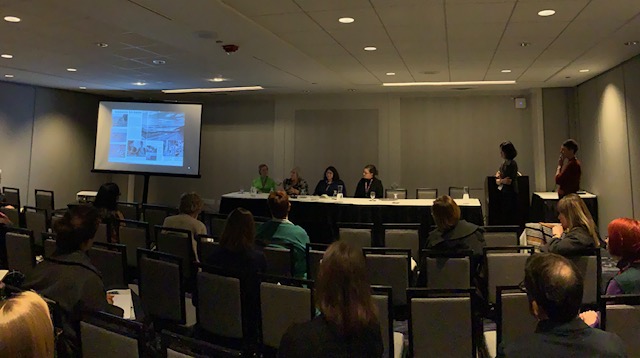
Congratulations to Nina Amstutz for winning the Novalis Gesellschaft’s prize for “innovative research on European Romanticism ” for her book Caspar David Friedrich: Nature and the Self (Yale UP, 2020). http://novalis-gesellschaft.de/index.php/106-forschungsstaette/novalispreis


